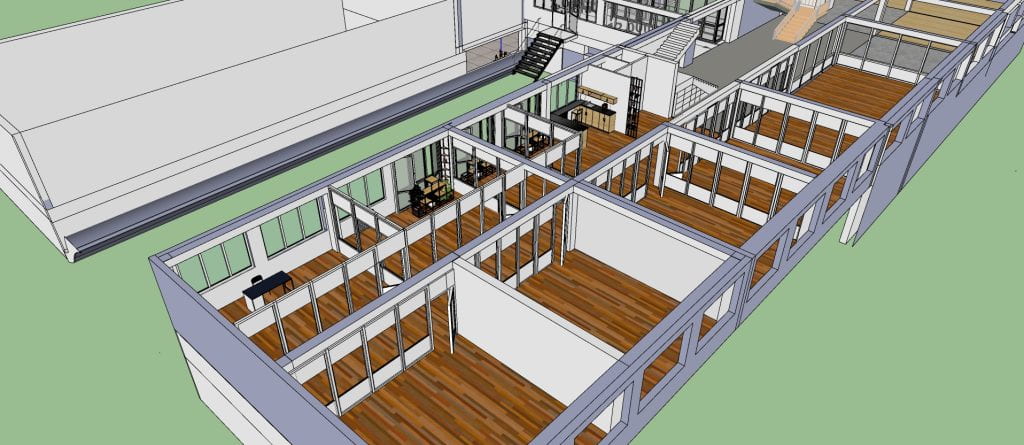- Տնտեսուհու սենյակի առկայության դեպքում՝
- ավելացնել դասասենյակներ միջանցքի հաշվին
Միջանցք ապահովելով ավելացել են երկու դասասենյակ




2. Տնտեսուհու սենյակի հանելու դեպքում ընդլայնվում դասասենյակը


Միջանցք ապահովելով ավելացել են երկու դասասենյակ




2. Տնտեսուհու սենյակի հանելու դեպքում ընդլայնվում դասասենյակը



Մուտք դահլիճի կողմից դեպի Մառան և խանութ-ցուցասրահներ

Սրահներ

Խանութ-ցուցասրահներ, որոնք առանձնացված են հացի փռից խուլ պատով :

Սրահների կողմից դեպի Մառան

Հանդերձարան խոհանոցի հետին պատին

Մառանի ներսի հատված. հպատերը՝ (քար և ներկած բետոն)
Հատակը՝ խճանկար բետոն


Բաց հանդերձարան


My art is a bundle of petty-bourgeois idleness which includes compulsive thoughts and “serious” discussions on art, also standard moral preaches about life and promising and loud manifestoes.
It grows monotonously and imperceptibly at the expense of your vanity and your boring pursuit for survival, at the expense of the hysteria of faithful wives and of the propriety relations of the jealous parents.
My art is about the wrapper of not fully eaten chocolates, crumpled cigarette boxes, morning coffee rituals and genital hygiene.
At the speed of Internet connection it opens up a wide road of overall absorption in front of you; it reserves the tracks to itself the memorial monuments of non-permanent things.
Karine Matsakyan is a multidisciplinary visual and digital artist based in Yerevan, Armenia.
She graduate of the Yerevan Academy of Fine Arts (1985). Her earlier paintings and pop sculptures, and more recently performance-based installations and video work incorporate her body to question the effects of consumerism, domestic violence and gender inequality. Solo exhibitions she has had in Armenia and Europe include: Charley Khachaturian Gallery, Yerevan (1997); ACCEA in Yerevan (2009). Group exhibitions include 3rd-Floor, House of Artists in Yerevan (1987), curator Arman Grigoryan; Work in Progress, 49th Venice Biennale, San Lazzaro Monastery (2001), curator Edward Balassanian; and Getting Closer, at the Institut für Auslandsbeziehungen, ifa-Galerie, Berlin, curator Mika Hannula (2003).
FEMINISM CORPOREAL
International Festival Cafesjian Center for the Arts (CCA) (2022), curator Susanna Gyulamiryan
Matsakyan lives in Yerevan and teaches new media art and graphic design at the Mkhitar Sebastatsi Educational Complex. “Blind Dates Project” is her New York debut.
Everywhere Every Day (animation-film)11,49min. 2010
Authors: Karine Matsakyan and Sona Abgaryan
Karine Matsakian (b. 1959) and Sona Abgarian (b. 1979) embark on a cross-generational journey to chart the unchanging position of women in their native Armenia. In this subtle animation video, they explore overarching issues of gender roles, feminism, and freedom of expression, expanding on their previous works’ critique of male dominance and consumerism in the art world and society at large. The video unfolds in a virtual world with the avatars, or digital personae, of the two artists performing against a green screen background, as if in the visual field of an early arcade game. Their puppet-like, computer-generated bodies move fluidly, at times acting like analog receivers of consumerist desires, and allow the artists to escape from the limits set by everyday conventions in order to reaffirm themselves as individuals or humans. The green screen background highlights its own infinite potentiality, as it could be replaced by any other image at any given time—a condition that is imbued with both freedom and anxiety. Through this the artists interrogate a woman’s “role” as one of perpetual editing, constant negotiating, and open to reformulation. What are the parallels between edited, artificial online environments and curated artistic systems? The result is a recounting of suppressed realities where the theatricality of gestures performed by Matsakian and Abgarian underscore the real conditions of Armenian society, and international art systems.
Which way do you like me best? Instalation with video projection
White men’s shirts, black ties and trousers, hangers, rope 2001
There are 13 human figures represented within this installation. 12 of which are men (symbolized through the hanging white shirts, black trousers and ties) who, as seen through the video projection, one by one are getting dressed by a woman – the 13th figure. She appears to have mobility compared to the more static or in limbo position of the men.
The work is a commentary on the endless mutation of feudal society – a miserable feeling which lasts too long – and an inpatient or desperate attempt to intervene.
Music for a Home Video. 2001 3 min.
In this performance video work, part of the artist’s naked body is covered with dough. She tries to stitch a transparent material with the dough, but has difficulty bringing together the two different materials – organic and non organic. As her lips move to say something, the body expresses things that words cannot.
There is a kind of psycho-spiritual condition when one’s imagination discovers its impotence. Even memory stays still, and physical abilities completely disappear while sensuality floats by itself in emptiness. At that very passive moment pleasure makes you high but you hardly enjoy, and pain turns into frustration that you barely escape suffering from.
“Music for a Home” is a shelter for the body.
It holds the scream of Post-soviet period in silence, a silence inside another silence. It is a regression, women going backwards to a totemic reality under the cover of modern society, just liberated from soviet formalism.
Here, a slightly visible perverted existence, conditioned by an already perverted nature, a brutal force appears. In order to free herself she resorts to non-natural means. These in turn make the endless darkness of the shelter-body even deeper.
Ընդհանուր տեսք

Երեք սանհանգույց խոհանոցի տարածքում՝ երկուսի մուտքը ընդհանուր դահլիճի կողմից , մեկը՝ խոհանոցի կողմից, աշտողների համար:



Աշխատանքային սեղան ներկառուցվող էլեկտրական օջախով





Մետաղյա կարկասով և ցանցով բանջարեղենի համար լվացարան


Եվրո դուռ՝ մուտք դեպի արտադրամաս












